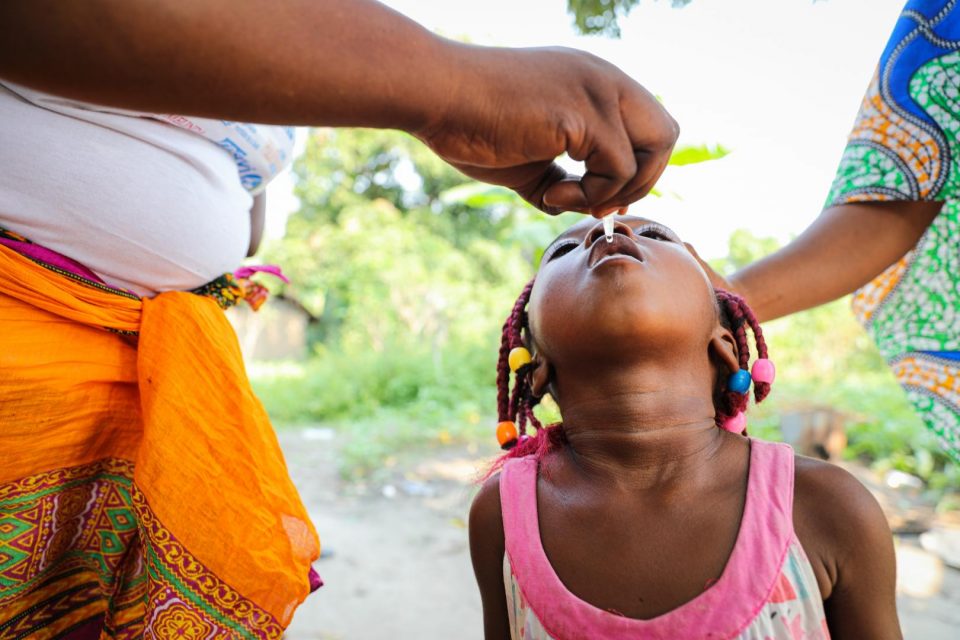BY DAYO ADESULU
The World Health Organisation (WHO) has rolled out a vaccine that has the potentials to put an end to all forms of polio in Africa.
In November 2020, the novel Oral Polio Vaccine type 2 (nOPV2) became the first vaccine to be authorized under the WHO Emergency Use Listing.
The vaccine has since been rolled out for limited initial use in countries to tackle vaccine-derived poliovirus. Dr Richelot Ayangma, Medical Officer and nOPV2 Focal Point at the WHO Regional Office for Africa explain the vital role of the vaccine in ending all forms of polio and what countries must do to ensure effective vaccination campaigns.
What advancements is nOPV2 bringing to the fight against polio?
The nOPV2 is an additional innovative tool to tackle polio outbreaks in the African region. It is a modified version of the mOPV2 vaccine that provides comparable protection against poliovirus type 2 but with increased stability. This means it has less risk of mutations and reverting to virulence, and hence reduces the risk of paralysing children in areas outside of the targeted mass immunization campaigns where there is low immunization coverage. Ultimately, nOPV2 poses less risk of seeding new polio outbreaks in our region.
The vaccine is being deployed under an Emergency Use Listing (EUL) that requires countries to meet a set of readiness requirements prior to the use of the vaccine. We have seen that working to meet these requirements has benefited countries as it has enabled them to more accurately review, plan and implement activities and thus strengthened the overall program performance in surveillance and routine immunization. All in all, these nOPV2 readiness activities have enabled countries to more rapidly detect, notify, and investigate new polioviruses while ensuring necessary steps for implementing high-quality response rounds in the event of an outbreak.
As the first vaccine to receive an EUL recommendation from WHO globally, nOPV2 paved way for other vaccines such as COVID-19 to be rolled out when there is an urgent need to respond to outbreaks.
What is the uptake of nOPV2 vaccine in Africa?
To date, more than 50 million children in six countries: Benin, Congo, Liberia, Niger, Nigeria and Sierra Leone have been vaccinated using nOPV2 with no major safety concerns. By the end of 2021, Ethiopia, Mauritania, Nigeria, The Gambia, Senegal and Uganda will be implementing their mass immunization campaigns using nOPV2, targeting a total of approximately 30 million children.
In terms of nOPV2 readiness, 23 countries in our region (Benin, Burkina Faso, Central African Republic, Chad, Congo Republic, Cote d’Ivoire, Democratic Republic of Congo, Ethiopia, Guinea, Kenya, Liberia, Niger, Nigeria, Mali, Mauritania, Senegal, Sierra Leone, South Sudan, The Gambia, Togo and Uganda) have met the criteria for nOPV2 under the Emergency Use Listing, making our region the leader in nOPV2 preparedness. An additional 9 countries have already started work to meet these requirements.
To date, more than 50 million children in six countries: Benin, Congo, Liberia, Niger, Nigeria and Sierra Leone have been vaccinated using nOPV2 with no major safety concerns
How can countries improve vaccination campaigns to be more effective?
The two critical elements to conduct immunization campaigns that will effectively stop polio outbreaks are timely response and the implementation of high-quality campaigns.
To effectively stop polio outbreaks, mass immunization campaigns need to ensure that no child is missed, and they must be implemented in a timely manner, that is within two months of notification.
In addition, we’ve seen that the work done by countries to meet the nOPV2 readiness criteria, coupled with the existing polio outbreak response guidelines, can help in improving campaign effectiveness as countries are required to conduct and validate their micro-planning. This takes into account the correct estimate of the target population, identifying the real needs for the implementation of the campaign, including special populations that are difficult to access.
Countries also must address vaccine refusals due to misinformation by integrating targeted communication and social mobilization activities into campaigns, allowing the population and parents access to the correct information on the current vaccination rollouts. This is crucial given the concurrent rollout of nOPV2 and COVID-19 vaccines. An increase in refusals has become one of the leading causes of non-vaccination.
And finally, countries are required to use current innovations such as Geographic Information System technologies and update existing tools for real-time monitoring of pre-, intra- and post-campaign implementation to ensure that every child is reached. For instance, monitoring dashboards have made it possible to assess the level of preparation for the campaigns and ascertain that campaigns are being implemented at the appropriate level of readiness.
What are major challenges in the efforts to eradicate polio?
Among the major obstacles that countries experience in their efforts to eradicate polio are overwhelming public health challenges. Diseases such as the COVID-19, cholera, measles, yellow fever and others deprioritize the polio outbreak response. This means that more children are at risk of being paralysed.
The weakened routine immunization in Africa has led to well-documented low vaccination coverage rates which are due to poor service delivery and few vaccination centres delivering inadequate vaccination strategies. Too many children are being chronically missed in mobile populations and hard-to-reach areas.
Other factors include delayed response due to the difficulty in accessing certain areas during vaccination campaigns due to insecurity and conflicts, and the inability to sustain the gains made in the polio programme. These can only be achieved by having countries integrate the polio functions into their broader public health system. Timely and effective coordination across country borders for large-scale synchronized mass immunization campaigns is critical so that no child is missed.
Finally, insufficient resources for countries, including vaccines and funds to conduct these outbreak response activities also hamper progress in eradicating polio.


